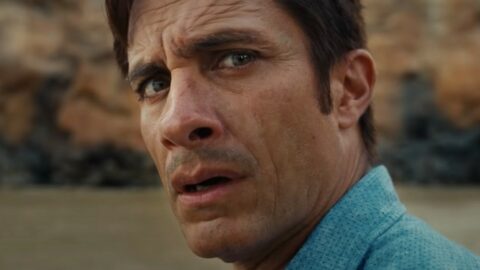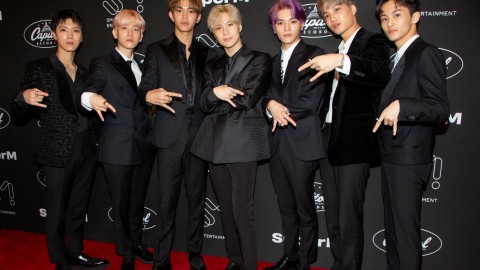
There’s a league of musicians whose deaths have felt particularly earth-shattering, because of a naïve, but widely shared, presumption that they would simply live on forever. That pantheon includes – to name but a few – David Bowie, Prince, MF DOOM, and now, Ryuichi Sakamoto. The Japanese artist and innovator died last Tuesday (March 28), his passing only revealed to the public yesterday (April 2).
Perhaps one of the reasons Sakamoto felt untouchable was that despite a breathtaking body of work built over several decades, and a life-changing throat cancer diagnosis in 2014, he never stopped working. His 12th – and now last – solo album, ‘12’, was released on his 71st birthday in January.
It concluded a career driven by an insatiable appetite for risk. And, yet, reward followed Sakamoto wherever he went: from his stardom as one-third of electronic music pioneers Yellow Magic Orchestra, to his wildly imaginative solo work, to his prolific output as a composer across mediums, and his silver-screen appearances as an actor.
Born in post-war Japan on January 17, 1952, Sakamoto picked up the piano as a 10-year-old already equally enamoured with the works of Claude Debussy and The Beatles. As a university student, he had his first exposure to synthesizers, going on to graduate with a degree in composition and a masters in music.
In 1977, after years as a studio musician, he was recruited by Haruomi Hosono to perform on his fourth studio album ‘Paraiso’. Hosono also roped in drummer Yukihiro Takahashi, and the trio would become known to international audiences as Yellow Magic Orchestra.

The band’s self-titled release in 1978 would instantly make Sakamoto and his brethren household names in Japan. Sakamoto’s mastery of the synthesizer and the group’s pop songwriting underpinned a flair for satire (evident in their early records’ parodies of orientalist tropes), gleefully reconfiguring old musical and cultural tropes into synthesized fantasies.
Even when Yellow Magic Orchestra were having a ball, they were leading the way. Their first record is an early example of synth-pop music, while their work together would later inform the fields of hip-hop, house, electro and J-pop; on their third album ‘BGM’, they became the first band to use the now-ubiquitous Roland TR-808 drum machine on a recording.
All three members were tirelessly prolific on their own, not least Sakamoto. In 1978, a month before the band’s self-titled release, Sakamoto unleashed his first solo outing, ‘Thousand Knives’, an early-career release that already showcased his curiosity and thirst for adventure.
His 1980 follow-up ‘B-2 Unit’, however, transported listeners from the warm glow of Yellow Magic Orchestra and ‘Thousand Knives’ into complete desolation. The album’s ‘Riot in Lagos’ is often cited as an early form of electro music, but the entire album eschewed traditional song structures for atmosphere and tone, anticipating the rebellious wave of 1990s IDM and electronic music a full decade beforehand.
In the same year Yellow Magic Orchestra released their last two albums before a hiatus, Sakamoto caught his first big break as an actor. He co-starred in the 1983 WWII film Merry Christmas, Mr. Lawrence alongside David Bowie. Sakamoto’s BAFTA award-winning score for the film, especially its main theme (a vocal version of which featured Japan’s David Sylvian), put him on the map as an individual talent. He would enjoy a long, fruitful and acclaimed career in scoring for the screen, from his Oscar-winning work for 1987’s The Last Emperor (in which he also had a supporting role) to 2015’s The Revenant, which earned him a Grammy nomination, and even a 2019 Black Mirror episode.

The indefatigable Sakamoto continued to broaden his range with omnivorous solo albums (1985’s tribal ambient ‘Esperanto’ and 1987’s Iggy Pop-featuring ‘Neo Geo’) and commercial work that reflected his open-hearted interest in technology: after a move to New York in 1990, he wrote and produced the start-up jingle for the Sega Dreamcast, composed ringtones included in the Nokia 8800 mobile phone, and even tried his hand at scoring video games.
In 2014, Sakamoto was struck by throat cancer, announcing a hiatus from music to focus on his health. His recovery process and preparation for his 19th studio album, 2017’s ‘async’, were captured with great intimacy in the film Ryuichi Sakamoto: Coda. The avant-garde techniques he honed during the album’s recording process were also expanded upon in live concerts, which he would perform till the end of the decade.
Though well enough to return to work in 2015, Sakamoto was hesitant to declare himself fully cancer-free. “I feel energy inside, but you never know,” he told Rolling Stone. “The cancer might come back in three years, five years, maybe 10 years. Also the radiation makes your immune system really low. It means I’m very welcoming [of] another cancer in my body.”
In 2021, Sakamoto revealed that he had been diagnosed with rectal cancer. He stated that performing live would be “difficult”, but he hoped to work as much as possible. “From now on, I will be living alongside cancer,” he wrote. In 2022, his diagnosis had escalated to stage four cancer, and later that year he streamed his final concert, ‘Ryuichi Sakamoto Playing the Piano’. 2022 also saw the release of a tribute album that, through an eclectic line-up of contributors including Cornelius, Thundercat, Devonté Hynes and old friend David Sylvian, demonstrated the breadth of his influence.
In his final years, Sakamoto confronted mortality in his music with both grace and splendour. But throughout his career, he restlessly bucked tradition, innovating within instrumentation, composition and technology. Over the decades, he remained fascinated with the pop song, testing the endurance of its form through different methods of musicianship – even while holding on to his earliest and dearest classical inspirations. In the wake of his departure, it’s hard to imagine that there will ever be another like Ryuichi Sakamoto.
The post Ryuichi Sakamoto, 1952-2023: an inimitable sonic innovator appeared first on NME.






